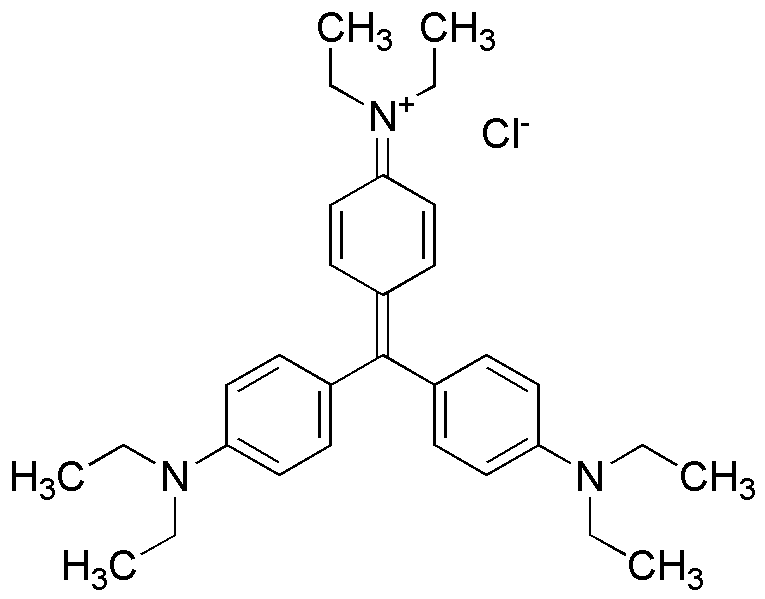Ethyl Violet is widely utilized in research focused on:
- Histology and Cytology: This compound serves as a vital stain in microscopy, helping researchers visualize cellular structures and tissues, which is essential for diagnosing diseases.
- Textile Industry: Ethyl Violet is used as a dye for fabrics, providing vibrant colors that are durable and resistant to fading, making it ideal for clothing and upholstery.
- Biological Research: It acts as a pH indicator in various biochemical experiments, allowing scientists to monitor changes in acidity or alkalinity in solutions.
- Pharmaceutical Applications: The compound is explored in drug formulation processes, particularly in creating color-coded medications that enhance patient compliance and safety.
- Environmental Monitoring: Ethyl Violet is employed in assessing water quality, as it can indicate the presence of certain pollutants, aiding in environmental protection efforts.
General Information
Properties
Safety and Regulations
Applications
Ethyl Violet is widely utilized in research focused on:
- Histology and Cytology: This compound serves as a vital stain in microscopy, helping researchers visualize cellular structures and tissues, which is essential for diagnosing diseases.
- Textile Industry: Ethyl Violet is used as a dye for fabrics, providing vibrant colors that are durable and resistant to fading, making it ideal for clothing and upholstery.
- Biological Research: It acts as a pH indicator in various biochemical experiments, allowing scientists to monitor changes in acidity or alkalinity in solutions.
- Pharmaceutical Applications: The compound is explored in drug formulation processes, particularly in creating color-coded medications that enhance patient compliance and safety.
- Environmental Monitoring: Ethyl Violet is employed in assessing water quality, as it can indicate the presence of certain pollutants, aiding in environmental protection efforts.
Documents
Safety Data Sheets (SDS)
The SDS provides comprehensive safety information on handling, storage, and disposal of the product.
Product Specification (PS)
The PS provides a comprehensive breakdown of the product’s properties, including chemical composition, physical state, purity, and storage requirements. It also details acceptable quality ranges and the product's intended applications.
Certificates of Analysis (COA)
Search for Certificates of Analysis (COA) by entering the products Lot Number. Lot and Batch Numbers can be found on a product’s label following the words ‘Lot’ or ‘Batch’.
*Catalog Number
*Lot Number
Certificates Of Origin (COO)
This COO confirms the country where the product was manufactured, and also details the materials and components used in it and whether it is derived from natural, synthetic, or other specific sources. This certificate may be required for customs, trade, and regulatory compliance.
*Catalog Number
*Lot Number
Safety Data Sheets (SDS)
The SDS provides comprehensive safety information on handling, storage, and disposal of the product.
DownloadProduct Specification (PS)
The PS provides a comprehensive breakdown of the product’s properties, including chemical composition, physical state, purity, and storage requirements. It also details acceptable quality ranges and the product's intended applications.
DownloadCertificates of Analysis (COA)
Search for Certificates of Analysis (COA) by entering the products Lot Number. Lot and Batch Numbers can be found on a product’s label following the words ‘Lot’ or ‘Batch’.
*Catalog Number
*Lot Number
Certificates Of Origin (COO)
This COO confirms the country where the product was manufactured, and also details the materials and components used in it and whether it is derived from natural, synthetic, or other specific sources. This certificate may be required for customs, trade, and regulatory compliance.


